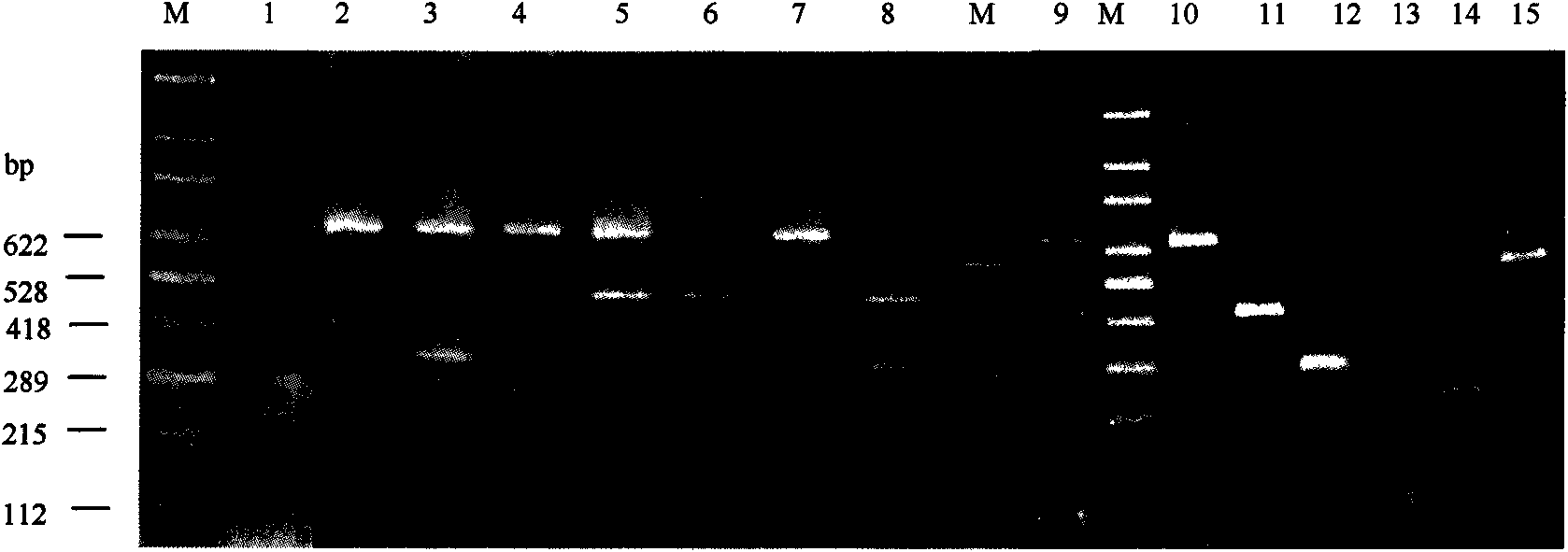Multiple-PCR detection method for pathogenetic bacteria in soil
A detection method and technology for pathogenic bacteria, which are applied in the directions of microorganism-based methods, biochemical equipment and methods, and microorganism determination/inspection, etc., can solve problems such as time-consuming, labor-intensive, and complicated operation
- Summary
- Abstract
- Description
- Claims
- Application Information
AI Technical Summary
Problems solved by technology
Method used
Image
Examples
Embodiment 1
[0067] Soil sample collection and pretreatment: Take the soil 1-5cm away from the surface of the soil layer and put it into a sterilized sealed plastic bag. Remove large particles such as plant residues and sand and stones in the sample, grind and sieve (20 mesh sieve), weigh 100g soil sample and store it at -80°C for later use.
[0068] Extraction of bacterial DNA from soil: using FastDNA SPIN Kit for Soil and FastPrep TM FP120 Nucleic Acid Extractor (Bio 101, Carlsbad, CA, USA) was used to extract and purify total DNA from soil samples. For specific methods, refer to the manufacturer's instructions. The main process is to weigh 500 mg of fresh soil sample into a lysis tube containing ceramic and silica particles, then add 978 μL of sodium phosphate buffer and 122 μL of microtube buffer, and put the tube into FastPrep TM FP120 Nucleic Acid Extractor, set the speed at 6.0 and run for 40 seconds, and finally filter and elute the total DNA with a silica gel column for purifi...
PUM
 Login to View More
Login to View More Abstract
Description
Claims
Application Information
 Login to View More
Login to View More - R&D
- Intellectual Property
- Life Sciences
- Materials
- Tech Scout
- Unparalleled Data Quality
- Higher Quality Content
- 60% Fewer Hallucinations
Browse by: Latest US Patents, China's latest patents, Technical Efficacy Thesaurus, Application Domain, Technology Topic, Popular Technical Reports.
© 2025 PatSnap. All rights reserved.Legal|Privacy policy|Modern Slavery Act Transparency Statement|Sitemap|About US| Contact US: help@patsnap.com


